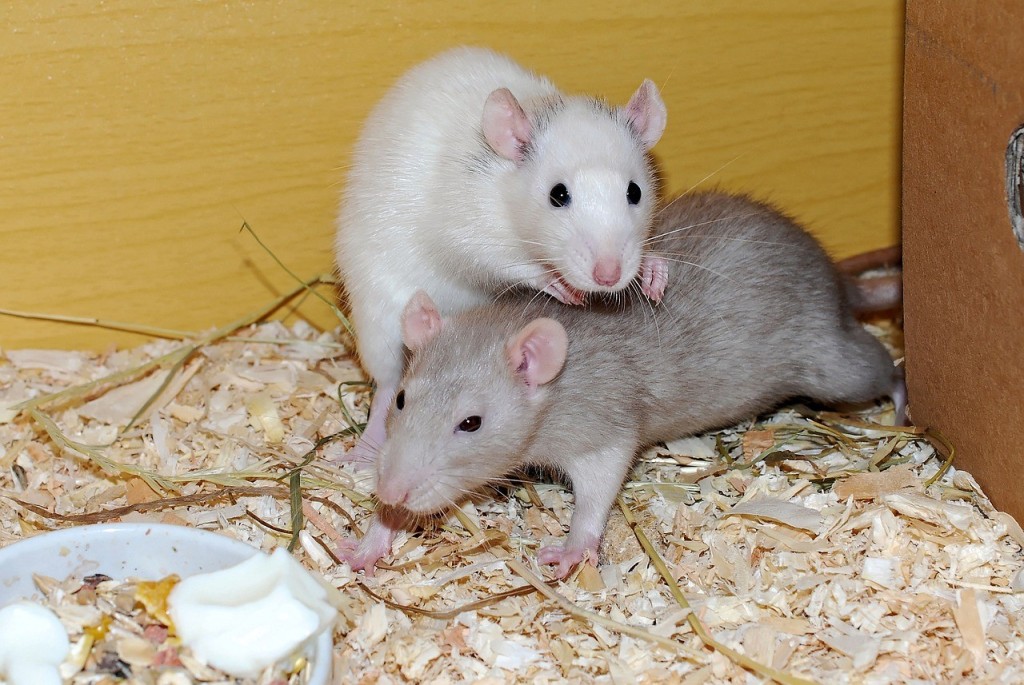Rats are smart and social small animals that make great pets. If you want your rat to be happy, you should have more of them. They’ll be the happiest with a few ratty friends running around the cage with them.

But even though they love to be in the company of other rats, introducing a new pet rat should be done right. You can’t just throw in a new rat in the cage, but must follow a few steps that will ensure your rats accept each other and start their friendship on the right foot.
Below are the steps to follow. Make sure you do them properly, especially if you’re dealing with adult males who can get quite territorial. Also, keep in mind that you shouldn’t introduce rats of the opposite sex until they are neutered.
STEP 1: Quarantine cage
Put your new rat in the quarantine cage completely isolated from the other rats. Make sure you give him your time and love because rats do not like to be alone. You can take a walk around the house with your new rat and play with him often to make their quarantine time easier. You should keep your rat in a quarantine cage for about two weeks.
Before you start to introduce your rats make sure your new rat is healthy and not showing any signs of illness. You would be wise to have a vet check it. If after two weeks, your new rat looks just fine, with no signs of illness, you can proceed to the next step.
STEP 2: Put the new rat cage close to the other cage
When you put your new rat cage close to the other cage, make sure you leave a space between them so that rats wouldn’t fight or injure each other. About four inches should be fine. They will become very interested in each other and sniff each other often.
Optionally, you can clean the cage where your ‘old’ rats are and leave the cage with the new rat uncleaned for a few days so the odor stays. That way they can easily see and smell the new rat which will prevent the old rats to become too territorial and aggressive towards the new rat. Keep an eye on any signs of aggression.
STEP 3: Introduce the rats on the neutral ground
You can introduce rats in a lot of places in your house. On your bed, on the floor or in the bathtub would work fine. If you have multiple rats, I would suggest you introduce them one by one because it can be too shocking for your new rat to see multiple ones and fights could occur. By introducing them one at a time you can see also how each rat is going to react.
Normal rat behavior would be a lot of sniffing of their genitalia to get to know each other better. If any of the rat poops, it’s also not atypical.
Repeat the process for any other rats. Then put the whole group in the neutral ground and observe them. They will probably just explore. You’ll have to be cautious of any teeth chattering or similar because it could be a sign of aggression.
STEP 4: Swap the rat cages when they are a bit dirty
When the cages get a bit dirty, you can put the new rat in the cage where the other rats are and vice versa. Let them smell each other’s odor to completely familiarize with each other.
STEP 5: Put the rats together
I would recommend to keep the cages open, so you can get rats out quickly if a fight happens. Watch carefully for any signs of aggression; this can be stressful for some rats.
If there are any problems between the rats you can try putting vanilla extract near their genitalia to disguise their natural smell. Also, you can give them treats after some time to distract them a little bit and to release the stress.
I hope these step by step instructions were useful in learning how to properly introduce two or more rats. When this is done, enjoy the presence of your beautiful pets getting along great!
Written by Monika Kucic for LAA Pet Talk. Monika is a huge animal lover, currently having two cats in her life. She is the owner of the pet blog called Animallama, where she posts pet care, pet tips, and advice.
If you are a pet owner with writing skills, Lincoln Animal Ambassadors would love to hear from you! We’re especially looking for content about birds, exotic animals, and horses. Content may take the form of an advice column or how-to articles. You may even simply wish to act as an expert consultant. If you are interested, please post in the comments and we’ll be in touch.

